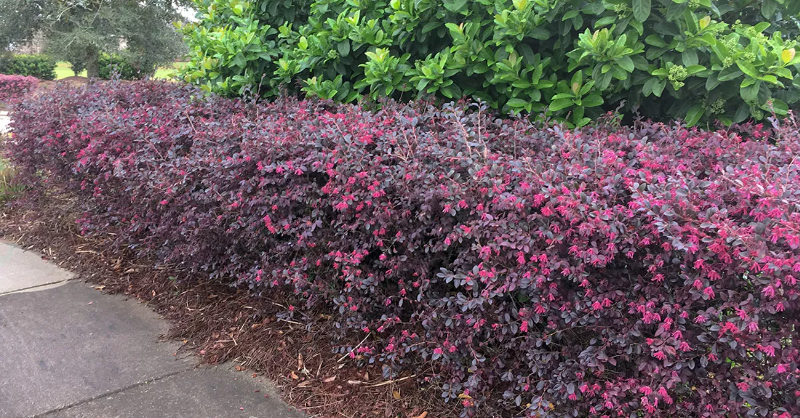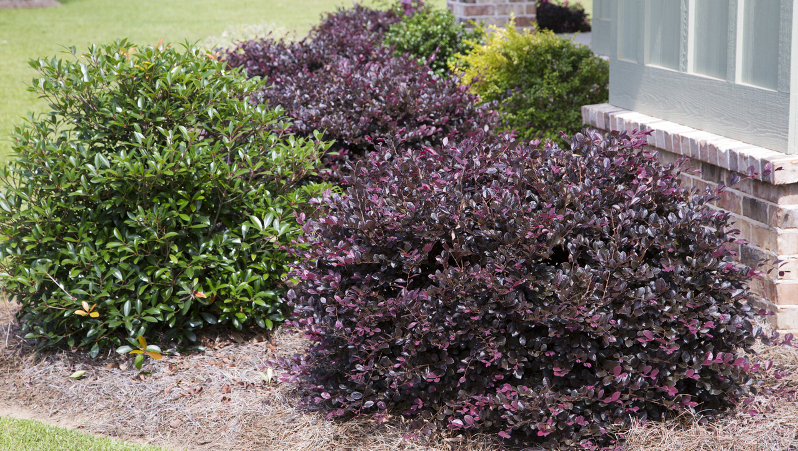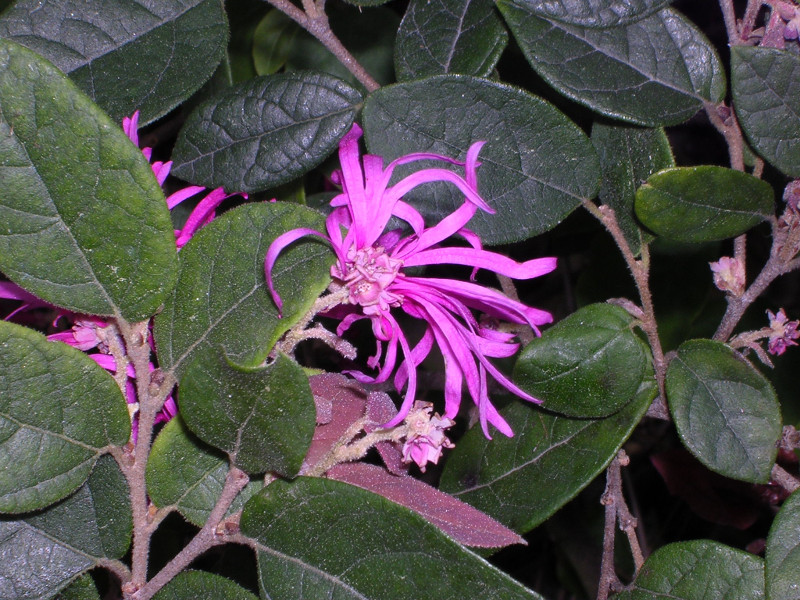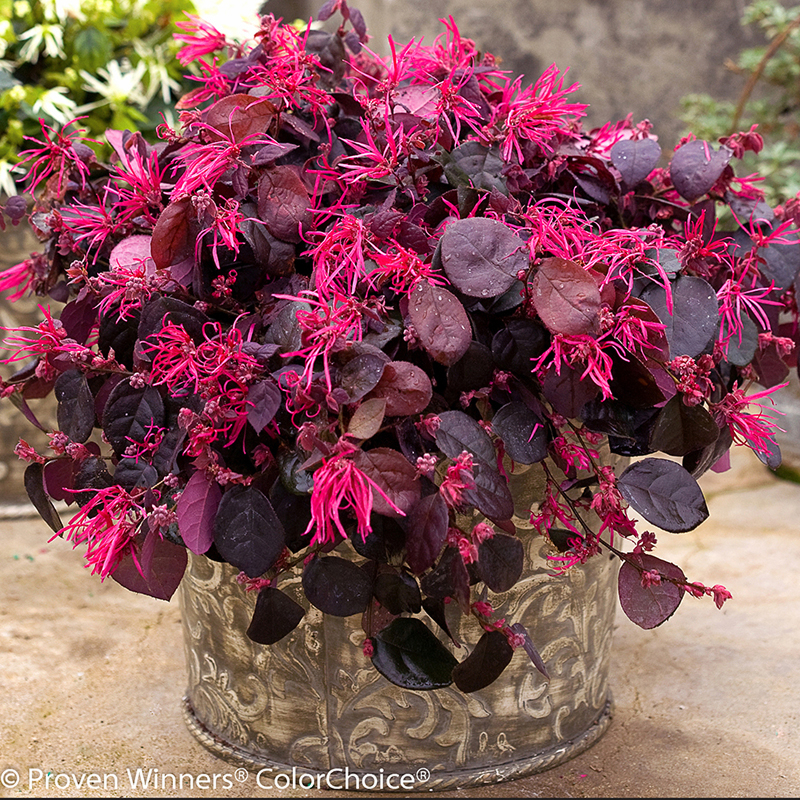Loropetalum are a group of shrubs typically grown in southern states. These are flowering evergreens that grow in USDA hardiness zones 7-10. Loropetalum shrubs are part of the witch-hazel family and also referred to as Chinese Fringe Flower. The plants are native to Japan, China and the Himalayas.

We've made articles to ensure you are successful caring for loropetalum and also know what to expect if you choose to try and grow these beautiful shrubs for the first time. In general, loropetalum are very easy to care for. Click on the links for more detailed information on each subject.
Planting Loropetalum
Choose a location that gets partial sun to partial shade. The best location is a place that gets morning sun and afternoon shade. However, these plants can tolerate full sunlight conditions as well. Make sure to pick a space that allows the shrubs to grow into and have enough room. Loropetalum prefer well drained soil, but can handle clay soil as well.

Watering Loropetalum
Once established, you will need to water loropetalum once a week unless it rains. Loropetalum growing in pots may need to be watered more frequently as the planters will dry out faster than the ground will. Newly planted loropetalum will need to be watered several times per week, especially if you plant during a hot time of the year.
Fertilizing Loropetalum
Applying a slow release fertilizer in spring is the best time. The plants prefer slightly acidic soil and the fertilizer should ensure the plants thrive. A yearly application of fertilizer will help the shrub bloom and have healthy growth in the summer. Summer and fall applications of fertilizer are OK too, but we do not recommend fertilizing in the winter.
Winter Care For Loropetalum
These plants are evergreen and require very little care during the winter. The growth rate slows down quite a bit during cooler months, but the leaves should stay in tact. Loropetalum do not flower during the winter though. In general we recommend leaving the plants alone during the winter and do not prune or fertilize. You may water if you have a period of drought. But be sure not to overwater because the shrubs do not need as much moisture. Make sure the ground dries out completely between waterings.
Loropetalum Aren't Blooming
Loropetalum usually bloom in spring and summer. If that isn't the case for your shrubs there are some simple ways to troubleshoot the problem. Typically the plants aren't blooming because of pruning during the winter, its the wrong time of the year or the plants aren't receiving enough sunlight.

Caring Loropetalum in Pots
Growing loropetalum in pots is a great way to add beauty to locations like decks, patios, balconies, porches and other areas where it isn't possible to grow plants in the ground. It is very easy to grow in containers given you pick a location that received enough sunlight and the container has good drainage. It does take a little bit more care when watering, but other than that these plants do very well in garden planters.

Common Loropetalum Care Questions
Does Loropetalum Need Full Sun?
Loropetalum prefers to grow in areas of the partial sun to partial shade, they really like morning sun and afternoon shade, but can also tolerate full sun.
Does Loropetalum Lose Its Leaves In Winter?
Loropetalum is evergreens, they do not lose their leaves during the winter months.
Why My Loropetalum Looks Bad And Looks Dead?
The most common cause for Loropetalum to look bad is not enough sunlight or too much water (causing root rot) to which they are susceptible.
What Is The Growth Rate For Loropetalum?
On average, Loropetalum grows about a foot a year, though some varieties can double that and gain up to two feet annually.
What Is The Growth Rate For Loropetalum?
On average, Loropetalum grows about a foot a year, though some varieties can double that and gain up to two feet annually.
Why Loropetalum Leaves Turning Brown And Yellow?
Yellow leaves most often mean they're getting too much water, and the roots are compromised and cannot absorb nutrients from the soil. The best way to try and fix this is by digging the plant up, adding some dry soil to the wet spot, and replanting the Loropetalum, or moving it all together, to a drier spot. Browning leaves are usually a sign of not enough water or that the roots have been somehow damaged or over-fertilizing.
Have a question about Loropetalum? Fill out the form below and we will try and get back to your question as soon as possible. We may even feature your question on this article to help other gardeners!
